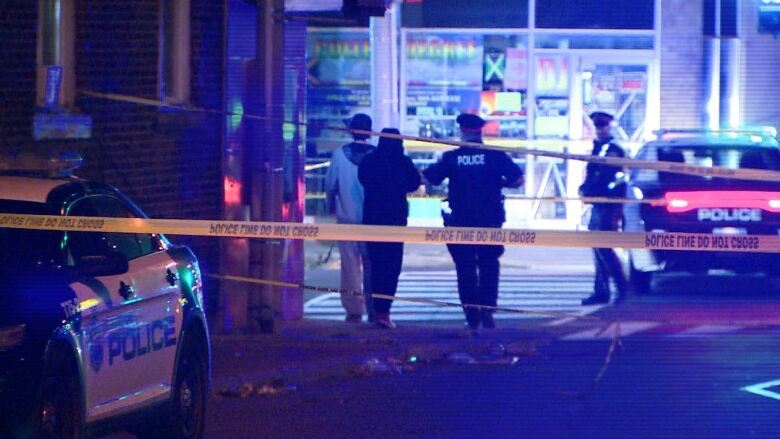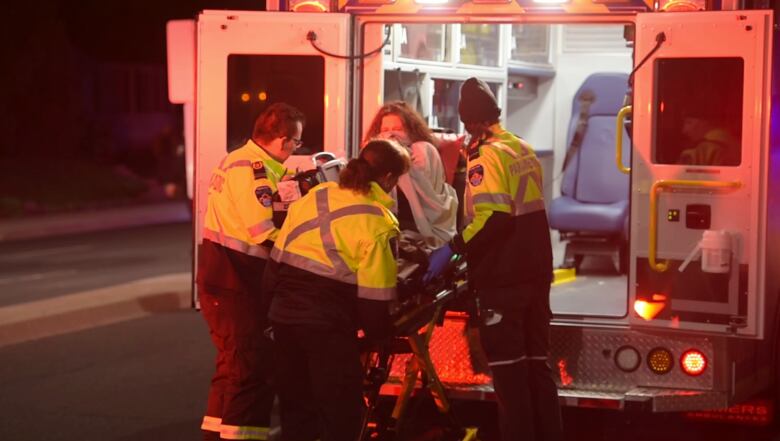When 'targeted' crime in Hamilton is surging, should you be worried?
Is there reason for broader concern despite the reassurance there's no public threat from a targeted crime?

It's a refrain that has become as familiar as the sound of gunshots in Hamilton this year.
Gunfire punctuates the night, and someone is killed police say it was "targeted."
A home invasion occurs, where multiple people force themselves inside with a semi-automatic rifle police say it was "targeted."
But what does targeted really meanand what does that messaging signal to people living their day to day lives in Hamilton? Is the average person truly safe when a shooter picks a very specific target, or is theincrease in violence the city is seeing emblematic of a bigger problem that should concern the broader community?
In general, the public is pretty safe. It takes a bit of a fluke to put the public at risk but it can happen, especially with guns involved.-Kevin Bryan, retired police officer
At its core, when police say a crime is targeted, it means they believe there's a connection between a suspect and a victim. Police saythey've seen a rise in the number of targeted incidents in Hamilton this year.
"We use the term targeted to reassure the public that there is no general threat to public safety," said Jackie Penman, spokesperson for Hamilton police.
But is that truly reassuring, when bullets are flying just down the street from your home?
Crimes fuelled by the drug trade

Michael Kempa is an expert in security and policing from the department of criminology at the University of Ottawa. He says that just because a crime is targeted, doesn't mean that it's of no concern to the general public.
"I'm not satisfied that there's no ancillary risk to the public in these situations," Kempa said. "Apart from utterly random crimes, all crime is targeted to some degree.
"What's [the police's] interest in telling everybody not to worry about it?"
Even though they're telling people not to worry about it, police are still holding public meetings about the violence in Hamilton, with residents attending to share their concerns.
The city is seeing a rise in targeted crime this year, according to investigators. There have been 35 shootings so far in 2017, which isalmost as many as the previous two years combined. There have also been 40 home invasions.

Hamilton police say they are still investigating many of the targeted cases in the city this year. "We believe drugs tend to be the underlying motive," Penman said in an email.
Police have been saying for years that drugs opioids especially are directly linked to crime. Hamilton's drug problem is obvious to anyone who is paying attention.
In the week of Oct. 9 to Oct. 15 alone, 51 people in Hamilton sought help at emergency rooms for suspected overdoses, according to the city's opioid information monitoring system.
'Why highlight a weakness?'
Fifty-two Hamiltonians died of opioid overdose last year, which isa death rate nearly double the provincial average.
Police say that targeted crime involving drugs includes a wide range of offences, from violent retribution for drug debts, break-ins to grabprescription drugs, and desperate people stealing to feed a habit.
Police don't specify which home invasions or shootings in the city are directly linked to drugsas to not jeapordize investigations before they end up in courtbut you can see its effects around the margins of many cases.
Take 37-year-old Nicole Dragisic she struggled with addiction for years, before being gunned down in the doorway of an east end apartment last month. Then there's the home on the Mountain where a woman was shot, which was hit twice in just a couple of days, with children inside.
Kempa says that police may be callingthese incidentstargeted in part to "dampen public expectations" in the face of a public health crisis that they, and by extension the city, haven't been able to get a handle on.

"Why highlight a weakness?" he said.
This kind of messaging also implies that people who are committing crimes while under the influence of drug addiction aren't part of the wider community, he said.
"If you've fallen into opioid addiction, it doesn't mean you deserve to be victimized."
A low chance of 'collateral damage'
But one police veteran has a different viewpoint on targeted crime. Retired police detective Kevin Bryan knows all about ithe spent 16 years in York Regional Police's forensics unit. He left the force in 2011 after a 30-year career, and now teaches in Seneca College's police foundations program.
He says there's a chance that you could see "collateral damage" from a targeted crime but that risk is low.
"There's always a danger in a pursuit that something could happen, or a chance that the wrong house is targeted," he said. "There's always that chance that the general public could find themselves at risk, but it's a low percentage.

"In general, the public is pretty safe. It takes a bit of a fluke to put the public at risk,but it can happen, especially with guns involved."
There's also a danger, he says, for parents of children who fall into drug addiction to then have their homes broken into over drug debts.
Bryan saw countless crime scenes over his decades on the joblinked to drugs or gang violence, and most of the time, he says, there was a link between the suspect and victim. Almost all crime is targeted and not random, in his experience.
"A lot of the crimes you go to, your victims aren't sugar sweet," he said.
"Not many people who have absolutely nothing to do [with crime] are going to be victims of murder. Ninety-five per cent of murders have a motive."












_(720p).jpg)


 OFFICIAL HD MUSIC VIDEO.jpg)
.jpg)



























































































